Table of contents
The green, flat-oval pumpkin seeds are the peeled seeds of the pumpkin ( Cucurbita ssp.) and are popular as a healthy snack. Pumpkin seeds often come from the Styrian oil pumpkin ( Cucurbita pepo styriaca), as these seeds lack the enclosing shell. Pumpkin seeds are available raw and roasted. Raw, they are always dried in stores to avoid rotting.
Use in the kitchen:
Raw pumpkin seeds are a crunchy snack and a real treat as a topping on salads, soups or muesli ( e.g. pea muesli with oat flakes). Whole, chopped or ground, they can also be used in sauces, spreads or baked goods. Dried pumpkin seeds are also used with rice, pasta and especially vegetables - see our recipe for celery linguini.
Together with sunflower seeds, linseed and various other seeds, pumpkin seeds can be combined to create your own seed mixture depending on your taste and use.
Peeled pumpkin seeds are known in Mexico and Latin America as "pepitas", from the Mexican Spanish "pepita de calabaza" (little seed of squash). In Mexican cuisine, they are also often found as an ingredient in traditional dishes. In Spain, they are called "pipián" and in Greece, lightly roasted, salted and peeled seeds are popular as "πασατέμπος" (from the Italian passatempo = hobby, pastime). In North America, they are marinated after roasting and also nibbled as a snack. 1 In any case, raw (= unroasted) pumpkin seeds would be much healthier.
Pumpkin seed oil is also pressed from pumpkin seeds.
Recipe for dried (raw) pumpkin seeds:
Edible pumpkin seeds can be made from practically any edible (!) pumpkin. The seeds of the Hokkaido pumpkin and the butternut squash are ideal.
First, remove the pulp from the seeds. This is best done in a bowl of water, where you separate the fibers from the seeds. Another option is to place the seeds in strong salt water to loosen the pulp that is still attached. All remaining fiber residues can be removed with a kitchen towel. Then dry the seeds with a towel and leave them to dry either in the sun, in a slightly open oven at a maximum (!) of 40 °C, or in a dehydrator. After drying, the seeds can be removed from the shell. It is recommended that you carefully work the dried seeds with a rolling pin on a smooth surface. Applying light pressure will break the shell. You can now break the cuts apart with both thumbnails, a knife, or scissors and free the seeds from the shell.
It is also possible to cook the white kernels briefly in water. However, as they are then exposed to very hot temperatures, they lose their raw food quality.
Vegan recipes with raw pumpkin seeds can be found under the note: " Recipes that have the most of this ingredient ".
| Not only vegans or vegetarians should read this: Vegans often eat unhealthily. Avoidable nutritional errors. |
Shopping - where to buy raw pumpkin seeds?
Pumpkin seeds are available in shops in various qualities. When shopping, you should prefer organic seeds. The typical dark green, flat oval and rather large pumpkin seeds of the Styrian oil pumpkin stand out with their intensely aromatic taste. However, there are also smaller, rounder seeds available to buy.
Supermarket chains such as Coop, Migros, Denner, Volg, Spar, Aldi, Lidl, Rewe, Edeka, Hofer etc. usually sell roasted pumpkin seeds. Roasted, they are often available as snacks with salt, sometimes with wasabi, curry or sweet with honey, caramelized sugar or chocolate. These additives increase the enjoyment, but encourage excessive consumption, which has a negative impact on health.
Dried, raw, organic pumpkin seeds can be found in health food stores and organic shops, or you can make them yourself.
Storage:
Pumpkin seeds are best stored in an airtight jar in a dry place protected from light. They will then last for several months.
Ingredients - nutritional value - calories:
The energy content of dried pumpkin seeds is very high at 574 kcal. The calories come mainly from fat (49 g/100g) and protein (30 g/100g).
The ratio between omega-6 and omega-3 fatty acids is very unfavorable in pumpkin seeds (> 170:1). In contrast, linseed has an extremely healthy ratio of 1:4 - see ingredient tables below 2 and link in the box above. The ratio is therefore the other way round, with less pro-inflammatory LA (omega-6) and more anti-inflammatory omega-3 in the form of ALA. According to the Federal Office of Public Health ( FOPH), the average value should not exceed 5:1 (LA:ALA). Erb-Müesli, for example, can correct this. If you enter the "sort by health values" option in the ingredients list, you can select healthy ingredients or those that would compensate for a deficiency. The same applies to recipes, e.g. by sorting by LA:ALA ratio. You can see the importance of this aspect in the link to olive oil, where we explain it in detail.
Pumpkin seeds contain a wide variety of antioxidant-active plant substances that capture reactive free radicals in our body and are responsible for a large part of the typical pumpkin seed effects. These include phenolic acids, lignans (a phytoestrogen), phytosterols and carotenoids (e.g. beta-carotene, lutein).
There are also other substances in pumpkin seeds: with 1233 mg/100g they are very rich in phosphorus, similar to unpeeled hemp seeds (1,650 mg/100g). 592 mg of magnesium (per 100 g of pumpkin seeds) cover 158% of the daily requirement, similar values are found in wheat bran. Only 4.5 mg/100g of the trace element manganese cover around 227% of the average daily requirement of a woman. The manganese content in oat flakes is comparable. Zinc and iron are also well represented among the trace elements. 2
You can find all the ingredients, the coverage of the daily requirement and comparison values with other ingredients in our nutrient tables. In the article Nutrients explained you will get a detailed insight into the topic. CLICK FOR under the ingredient image.
Health aspects - effects:
The protein in pumpkin seeds provides a lot of lysine, an amino acid that is only sparsely contained in most types of grain. Pumpkin seeds can therefore be an excellent supplement to grain protein.
Pumpkin seeds also contain a large amount of the amino acid tryptophan (100 g correspond to 230% of the recommended daily dose). 3 Many protein-rich animal foods do not provide as much tryptophan as pumpkin seeds. The body uses tryptophan to produce the hormone serotonin, and from this the hormone melatonin.
Serotonin has a positive effect on our mood and melatonin ensures good sleep. There are studies that show a positive effect on sleep problems through regular consumption of pumpkin seeds. 4
Dangers - Intolerances - Side effects:
Unfortunately, pumpkin seed oil has a very poor ratio between the two essential fatty acids linoleic acid (LA, pro-inflammatory) and alpha-linolenic acid (ALA, anti-inflammatory). You would have to compensate with walnuts or macadamia nuts. 2
The phytic acid contained in pumpkin seeds is not only harmful. In addition to binding minerals, phytic acid also has positive properties. Read this article : Briefly soaking seeds helps to reduce the amount of phytic acid.
If you prefer unsalted pumpkin seeds, there is less risk of overdose.
If you grow pumpkins, zucchini, melons or cucumbers yourself, it is important to use controlled seeds from the store. Otherwise, the fruits may taste bitter due to possible backcrossing and thus contain poisonous cucurbitacins. Environmental stress, i.e. heat, temperature fluctuations, fungal infections, overripeness and incorrect storage can also lead to increased levels of cucurbitacins in pumpkins (pumpkins, zucchini, melons and cucumbers). In addition, you should not grow ornamental pumpkins near edible pumpkins or zucchini, as backcrossing can also occur here. 9
Cucurbitacins are heat-resistant and hardly soluble in water; their content is therefore retained when vegetables are cooked. Fortunately, the bitter taste of cucurbitacins is noticeable at very low concentrations (the taste threshold is 10 −6 mol/l). These substances have strong laxative, diuretic, antihypertensive and antirheumatic effects. 1
Use as a medicinal plant:
Pumpkin seeds and medicines made from them are traditionally used to strengthen bladder function in cases of bladder weakness, especially in old age and in women. 5 These substances in pumpkin seeds are also effective in cases of irritable bladder and problems with urination caused by benign prostate enlargement. 6
Taking pumpkin seeds does not normalize the size of the prostate, it only alleviates the symptoms. For this reason, prostate hyperplasia should be subject to regular medical check-ups.
In particular, lignans, estrogen-like secondary plant substances, appear to be particularly important for the positive effects of pumpkin seeds. Recent research shows that lignans are responsible for regulating our hormone levels. They play a regulatory role in bladder function. 5,6
Lignans are found in high concentrations in the aqueous extract of pumpkin seeds. The recommended daily dose is about ten grams, which corresponds to 2-3 tablespoons of pumpkin seeds per day. 7
Pumpkin seeds - or even better pumpkin seed oil - are also said to help against intestinal worms. 7
Occurrence - Origin:
Pumpkins are grown in locations ranging from hot, dry areas to cool cloud forests. However, most species grow in hot lowland areas with distinct rainy and dry seasons. Pumpkins require a lot of sunlight and are sensitive to frost.
Cultivation - Harvest:
Information on pumpkin cultivation can be found under the ingredient pumpkin, raw.
General information:
The original domesticated form of the pumpkin, Cucurbita pepo, dates back to the time of the inhabitants of the caves of Guilá Naquitz in the province of Oaxaca (not Oxaca), Mexico (ca. 8000 BC). Other pumpkin finds come from Tikal (Guatemala, 2000 BC to 850 AD) and from Peru (3000 BC). The musk pumpkin was domesticated in Central America and the giant pumpkin in South America. In the 19th century, cultivation is documented in India, Java, Angola and Japan. 8
It is assumed that people originally only used the nutritious seeds, as these are free of bitter substances - while all wild forms have bitter fruits. By selecting non-bitter forms, humans have made it possible to use them as vegetables.
Today, five types of pumpkin are cultivated: Cucurbita argyrosperma, fig leaf pumpkin ( Cucurbita ficifolia), giant pumpkin ( Cucurbita maxima), musk pumpkin ( Cucurbita moschata) and garden pumpkin ( Cucurbita pepo). Pumpkins also thrive in the sand of coastal dunes or even on waterlogged lowland or gravel soils, but they require a lot of sunlight. 8
In English, dried pumpkin seeds are known as dried pumpkin seeds.
Bibliography - 9 Sources
| 1. | Wikipedia Englisch Pumpkin seed. |
| 2. | USDA United Sates Department of Agriculture. |
| 3. | Kasper H, Burghardt W. Ernährungsmedizin und Diätetik. 12. Auflage. München: Urban & Fischer Verlag. 2014. |
| 4. | Hudson C et al. Protein source tryptophan versus pharmaceutical grade tryptophan as an efficacious treatment for chronic insomnia. Nutr Neurosci. April 2005. |
| 5. | Yanagisawa E. et al. Study of Effektiveness of Mixed Processed Food Containing Cucurbita Pepo Seed Extract and Soybean Seed Extract on Stress Urinary Incontinence in Women. J Med Pharm Sci 2003; 14(3). |
| 6. | Terado T. et al. Clinical Study of mixed processed foods containing pumpkin seed extract and soybean germ extract on pollakiuria in night in elderly men. J Med Pharm Sci 2004; 52(4). |
| 7. | M.Pahlow. Das grosse Buch der Heilpflanzen. Hamburg: Nikol Verlag. 2013 |
| 8. | Wikipedia Kürbisse. |
| 9. | Verbraucherzentrale.de Giftstoff in selbst angebauten Zucchini. 2017. |

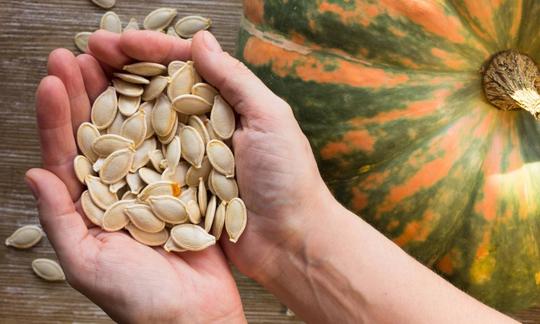

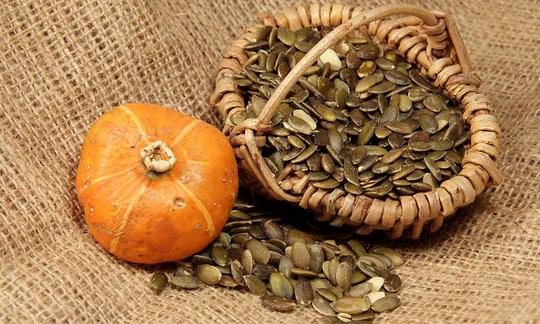

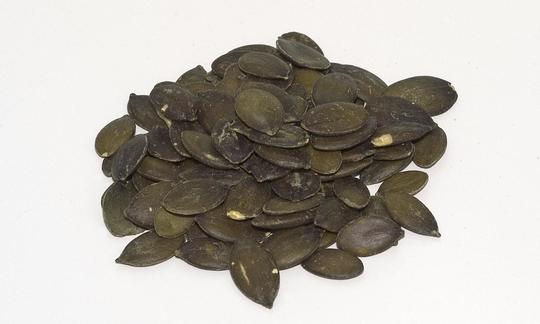

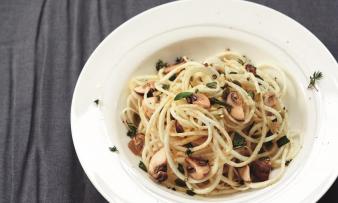
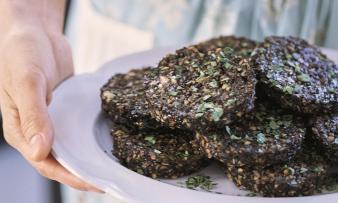
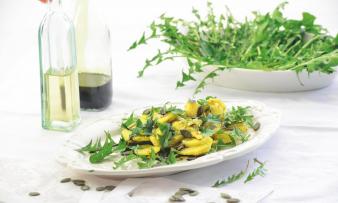





Comments